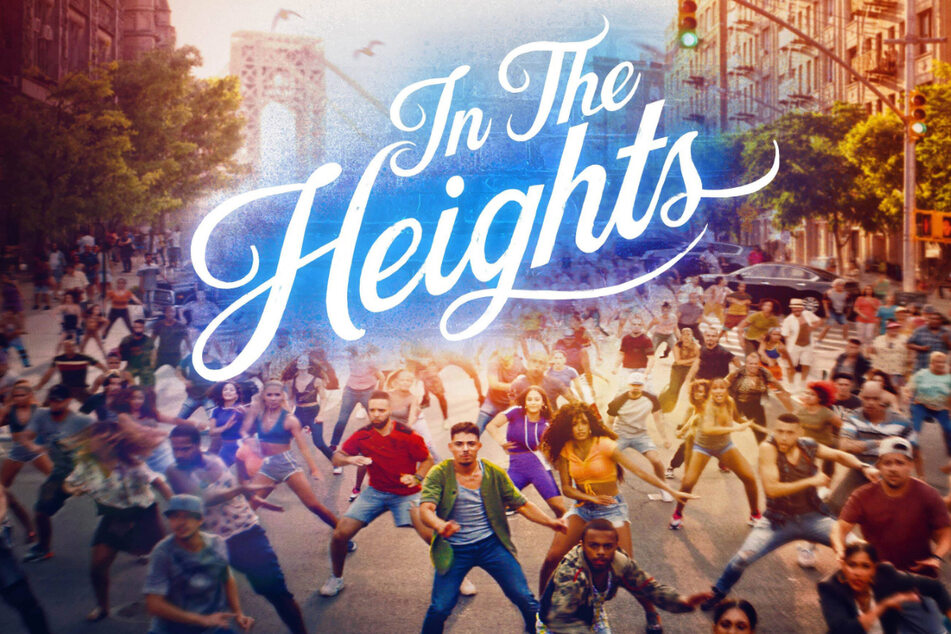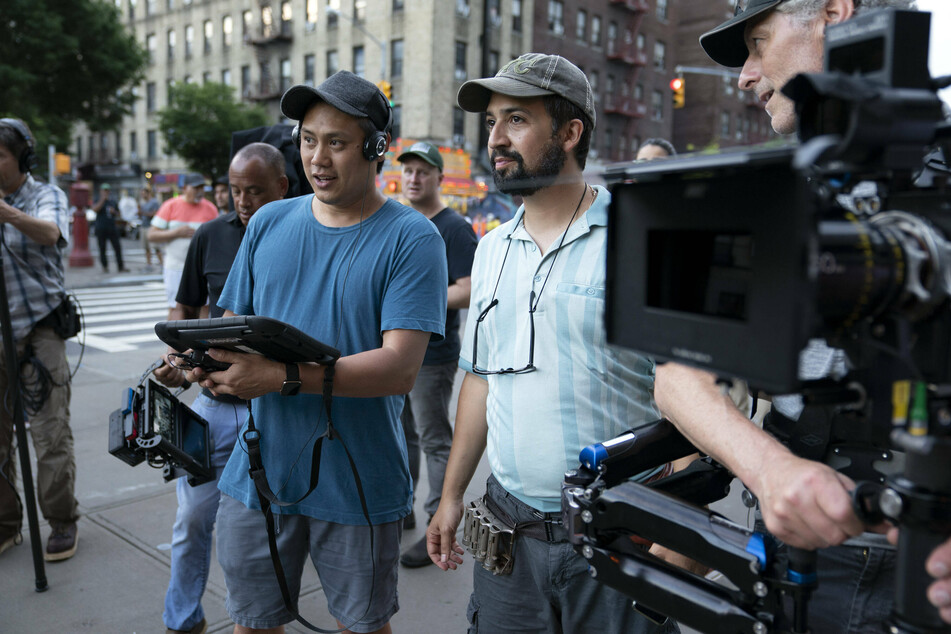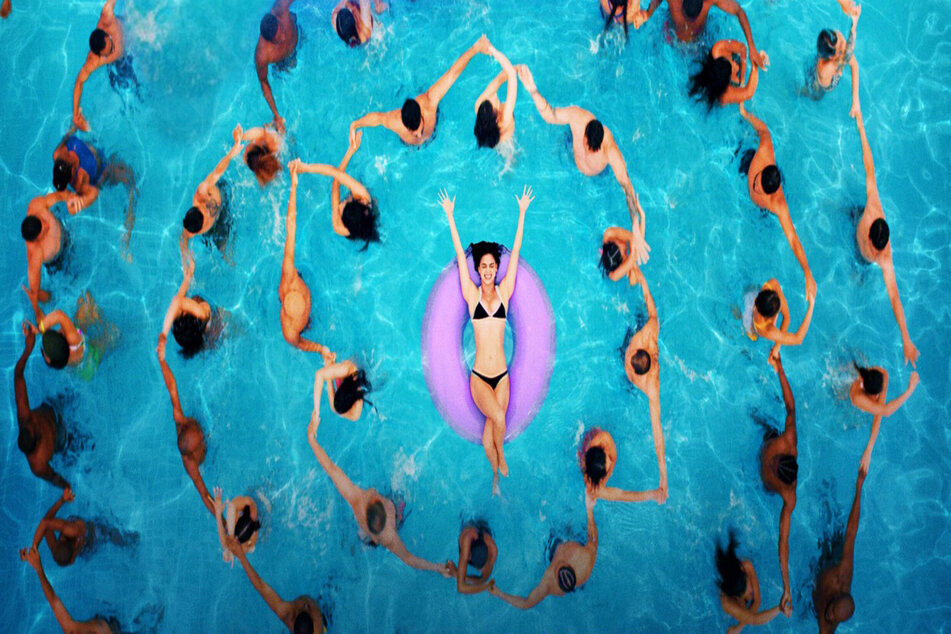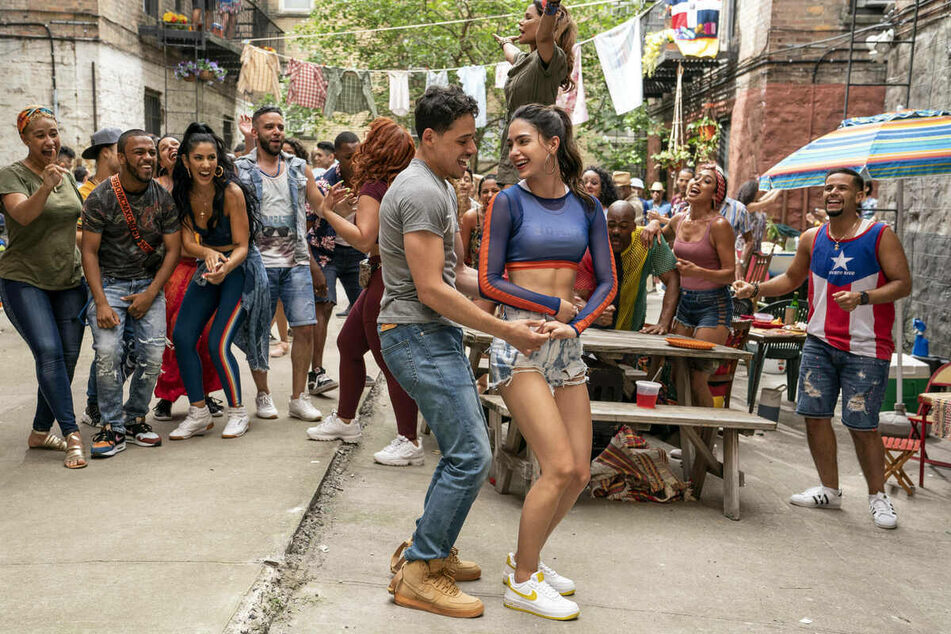In the Heights: This "little dream" of a film is a blockbuster reverie!
New York, New York – In the Heights, the new onscreen adaptation of Lin-Manuel Miranda's Broadway musical, was released in theaters and on HBO Max on Friday, and realizes a dream-come-true for its creators and fans alike.

In the Heights' linchpin is El Sueñito – the "little dream"– yet the mega-sized film is anything but little.
It is an explosive reverie: two hours and 23 minutes that accomplishes the feat of being both a behemoth blockbuster while focusing on the smallest of details. It dreams big, while never forgetting its roots.
I was lucky enough to snag a ticket to see it at a Manhattan IMAX theater in the heart of the island where the film is set. After not having been in a theater in over a year due to the pandemic, it was a deep-dive delicacy that oscillated between sensory-overload and gratitude.
The 200-person strong dance numbers filled the gigantic 72-by-53 foot screen, as the familiar noises of chit-chatting stoop dwellers, passing car horns, and opened fire hydrants trickled around me in surround sound for a truly immersive treat.
In the Heights' stage show had a successful Broadway run from 2008 to 2011, and was Miranda's first claim-to-fame before his game-changing musical Hamilton hit the scene in 2015.
The story's fabric weaves together collective dreams for the Washington Heights community as a whole and the individual aspirations of its members.
The film adds significant updated layers of DACA Dreamers and specific examples of racism Latinx people experience, a poignancy not touched on by In the Heights' theatrical version. It crafts new backstories for characters Sonny, Nina, and Vanessa that give impetus for their decisions and their struggles to make it as the odd one out.
Overwhelmingly, the film felt like a local love letter to New York City, and also a calling. If you're not in New York, it proffered a host of reasons you should be. And if you'd already found yourself in the Big Apple, it served a concrete-clad confirmation that this is the place you're meant to be.
A cinematic love letter to New York

The beauty in Jon M. Chu' s direction is that it zooms in while also panning out, both literally and figuratively.
Its cinematography used successive, fast-paced changing camera shots. Rather than capturing full dance sequences from one wide angle, Chu frequently switched to close-ups. It kept pace with the quick rhythms of the show's upbeat Latin-score and Miranda's plot-progressing prowess through rap and hip-hop.
Yet, Chu still captured so many of the setting's "small details," a connection to Abuela Claudia's mantra of appreciating the little things that are often taken for granted.
In many ways, the film felt like an inside joke between New Yorkers by encapsulating specifics that are inherent to living in "the greatest city in the world," to quote Miranda's Hamilton.
The drip of an air conditioning unit, the near-death experience of being hit by a taxi, the blinding sunlight reflecting off the boiling pavement and parked cars, walking past a chalk hopscotch game or chess players in the park, a shopkeeper hosing down the sidewalk as he opens his store for the day, the frustration of needing a wealthy guarantor for an exorbitant apartment lease – small "Only in New York" moments that residents know all too well.
Chu's imagery also skillfully uses reflections as characters experience moments of introspection. The pivotal moments of Usnavi and Vanessa's romantic tension are shot in the glass of a freezer door, and later, over their shoulders in a mantelpiece mirror.
And in what many on Twitter are calling the camera "shot of the year," actor Anthony Ramos peers out a bodega window behind a reflection of dancers to kick off the movie's opening number. It's a profound representation that communicates how the stories of his neighbors echo in his own.
But the scene-stealer is without a doubt the movie's rendition of 96,000, which was filmed at the famed Highbridge Pool in Washington Heights. The synchronized swimming is shot from both above and underwater, highlighting kaleidoscope choreography patterns with mind-blowing precision.
The pool locale works so well because it comes at a point in the story that is fittingly fueled by giddy intention: each character is bubbling with anticipation and the desire to hit it big with a lotto win.
If the scene is not filmmaking at its finest, I don't know what is.
On-screen liberties work to the story's advantage

Many of the film's choices are ones that can't be played on a Broadway stage, but that enhance Miranda's lyrics.
When Abuela Claudia sings, "Power less, we are powerless," she's shown lighting candles beneath an altar. It not only alludes to being without electricity, but to her unshakable belief that things are in the hands of fate.
In Breathe, as Nina deals with the pressures of representing her community, she sings directly to the scene's dancers, who create interwoven patterns and a wall of passersby. It adds a powerful physicality to a moment in which she directly faces her fears, as well as those who are looking to her as an example.
Other brilliant bonuses abound, like sets of salon customers' acrylic nails drumming to the beat, the use of graffiti CGI animation, and digitally-enhanced, gravity-defying fire escape dances.
Where it departs from its onstage counterpart, In the Heights plays into the magic of the movie musical to its benefit.
The film certainly pays homage to the ones that came before it. Its dance club scene exudes undeniable Danny-Sandy-Cha Cha vibes from Grease, as Usnavi blows his shot with Vanessa. Clear Singing in the Rain tributes abound, from the cast dancing in cascading fire hydrants to swinging around subway poles in Paciencia y Fe.
The choreography's inclusion of ballet to express the film's tender moments is reminiscent of most Golden Age shows on The Great White Way. Not to mention its geometric pool formations that are inspired by Busby Berkeley, the iconic choreographer at the helm of the film versions of 42nd Street and Babes in Arms.
Even the casting of theater veterans like Daphne Rubin-Vega, who originated the role of Mimi in Broadway's Rent, is a nod to the racially diverse shows that paved the way for In the Heights.
Usnavi himself evokes a modern-day Mark: Both characters narrate similar intertwining slice-of-life stories in their rough-and-tough Manhattan neighborhoods.
The joyful pride and flavors of the Latinx-Carribbean melting pot

The community bursts with so much joyful pride and distinct flavor that it begins to take on a life of its own throughout the film, so much so that Washington Heights becomes a character itself. You find yourself rooting for a neighborhood – and for the people that live there – as the underdog, and hoping that it will succeed and survive.
The melting-pot of the Latinx-Carribbean cultures and their well-worn wishes cooks up a full-on courtyard dance party towards the film's end with Carnaval del Barrio, a colorful explosion of back-alley pipe dreamers that fight to the finish.
As Nina repeats in the film: "Let me just listen to my block." And the sweet sounds are exactly what moviegoers get.
Cover photo: IMAGO / Prod.DB

